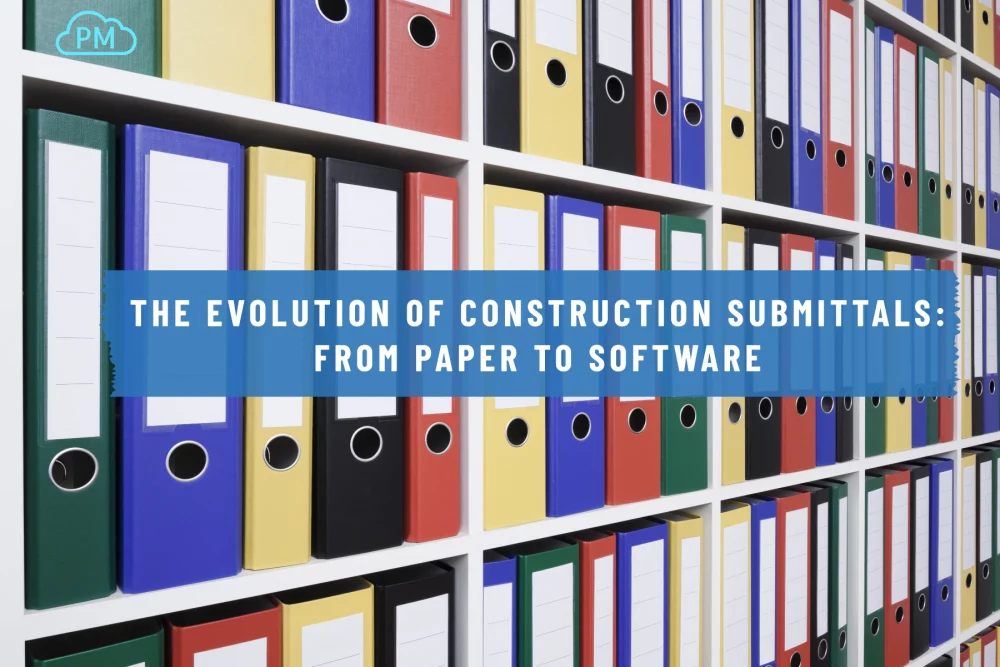The Traditional Paper-Based Submittal Process
Before the adoption of digital tools, construction submittals were managed through physical paperwork. Contractors, subcontractors, and suppliers had to submit hard copies of documents, drawings, and product specifications for approval. This process was slow, inefficient, and prone to errors.
Challenges of Paper-Based Submittals
One of the biggest issues with traditional submittals was the manual tracking and distribution of documents. A single submittal could require multiple copies, each needing review and approval by different parties. If any revision was necessary, the process had to be restarted, causing delays.
Additionally, project teams had to maintain extensive filing systems to store and organize submittal logs, approvals, and responses. Misplaced documents, missing approvals, and unclear revision histories often led to miscommunication and project setbacks.
The Shift to Digital Submittals
As construction projects became more complex, the need for a more efficient submittal process grew. Many companies transitioned to digital formats, using PDFs, spreadsheets, and email to manage their submittals. This shift helped reduce paper waste and improve organization, but it still required significant manual effort.
Limitations of Early Digital Methods
While digital files were easier to store and share than paper, early methods still had drawbacks. Many teams relied on email to send and track submittals, making it difficult to monitor approvals and ensure that all stakeholders had the latest version of a document. Spreadsheets were often used for tracking, but they required constant updates and could not automate workflows.
Version control also remained a challenge. If multiple team members worked on different versions of a submittal, discrepancies could arise, leading to confusion and potential rework.
How Submittal Software Transformed the Process
To address these challenges, submittal software emerged as a solution designed to streamline the entire process. By integrating submittal tracking, approvals, and document management into a single platform, modern submittal software eliminates the inefficiencies of manual processes.
Key Benefits of Submittal Software
Submittal software automates workflows, ensuring that each step in the approval process is documented and tracked in real time. Contractors, architects, and project managers can easily submit, review, and approve documents without relying on manual updates.
One of the biggest advantages is centralized document management. All submittals are stored in a single system, reducing the risk of lost files and ensuring that project teams can access the most up-to-date versions. Automated notifications alert team members when their approval is required, reducing delays and improving accountability.
Additionally, submittal software improves version control, preventing errors caused by outdated documents. With a clear audit trail, project teams can see when changes were made, who approved them, and what revisions were required. This level of transparency helps ensure compliance with project specifications and contractual obligations.
Why Construction Teams Are Adopting Submittal Software
With increasing project complexity and tighter deadlines, many construction firms are turning to submittal software to optimize their workflows. Manual processes are no longer sustainable for large-scale projects, where even minor delays can lead to significant cost overruns.
How Submittal Software Improves Project Management
Submittal software enhances project efficiency by reducing approval times, improving collaboration, and minimizing the risk of errors. Contractors and project managers no longer need to spend hours manually tracking submittals, allowing them to focus on more critical tasks.
Moreover, compliance and documentation are easier to manage with digital records. In case of disputes or regulatory reviews, having a well-organized digital submittal log can provide the necessary documentation to verify approvals and revisions.
Conclusion
The evolution of construction submittals from paper-based processes to digital solutions has greatly improved efficiency, accuracy, and collaboration in the industry. Submittal software has become an essential tool for modern construction management, helping teams stay organized, reduce delays, and maintain clear communication throughout a project's lifecycle.
As technology continues to advance, construction firms that adopt submittal software will have a competitive advantage, ensuring smoother project execution and better compliance with contractual and regulatory requirements.

